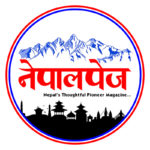
No country except China has propped up Russia’s war economy as much as oil-thirsty India. And few big democracies have slid further in the rankings of democratic freedom. But you would not guess it from the rapturous welcome Narendra Modi will receive in Washington next week. India’s prime minister has been afforded the honour of a state visit by President Joe Biden. The Americans hope to strike defence deals. Mr Modi will be one of the few foreign leaders, along with Winston Churchill, Nelson Mandela and Volodymyr Zelensky, to address a joint session of Congress more than once. The praise gushed on Capitol Hill about the partnership makes no mention of Ukraine, democracy or grit in the gears of America’s new best friendship.Listen to this story.
As our Asia section explains, the global clout of the South Asian giant is rising fast. Its economy is the world’s fifth biggest. Its 18m-strong diaspora is thriving, from America to the Gulf. And India has become indispensable to America’s effort to assert itself in Asia and deter Chinese aggression. Yet though huge, capitalist, democratic and wary of China, India is also poor, populist and, as our interview with Subrahmanyam Jaishankar, its foreign minister, outlines, dismissive of the vestiges of the post-1945 Western order. The relationship is therefore a test case for the messy alliance of democracies emerging in a multipolar world. Can both sides gain the business and security benefits of co-operation even as they share fewer principles than they may care to admit?
India’s ascent is an uplifting story. One of the fastest-growing economies, its gdp is expected to overtake Japan’s and Germany’s by 2028, even as it treads a novel path towards getting rich. In contrast to East Asia’s Tigers, India’s exports are powered by services, of which it is the world’s seventh-largest vendor. Think not just of call centres but data scientists for Goldman Sachs. Infrastructure has also improved under Mr Modi and his immediate predecessors, and manufacturing may pick up as supply chains diversify from China: Apple assembles 7% of iPhones in India. India’s chief failing is its vast numbers of unskilled, jobless young people. It is trying to help them by pioneering a digital welfare state.
Thanks in part to its diaspora, India’s soft power is world-beating. The bosses of Alphabet, ibm and Microsoft are of Indian descent, as are the heads of three of America’s five top business schools. Reflecting the accomplishment of Indian-Americans, 70% of the wider American public views India favourably, compared with 15% for China.
You might think all this makes America and India natural partners. Certainly, a 25-year effort to develop ties has been unaffected by political changes in either country. India is part of the Quad, a security grouping that includes America, Australia and Japan. In order to augment India’s hard power, America is promoting a series of defence deals, some of which may be signed in Washington next week, to enhance military-technology co-operation. The Biden administration reckons this would be the biggest milestone in the bilateral relationship since the striking, in 2005, of a civil-nuclear co-operation agreement.
Yet the relationship faces two potential sources of friction. First, India’s pro-Western tilt—which became more pronounced after border skirmishes with Chinese troops in 2020—is essentially pragmatic. Ideologically, it is suspicious of Western countries and flatly rejects their claim to global leadership. From Jawaharlal Nehru to Mr Modi, India considers the post-war order to have offered it little more than another bout of domination by other countries. The result of these contradictory impulses is disorientating. India is an American strategic partner that mistrusts the West, is unlikely ever to enter a formal alliance with America and is attached to Russia, which supplies it with arms. It is not clear how much support, if push came to shove, America could expect from India. It wants to bolster its land defences against China, not fight over Taiwan.
The second sticking-point is Mr Modi’s attacks on liberal norms. Under his Hindu nationalist, Islamophobic party, India is increasingly hostile to over 200m of its own people. Lynchings and the dispossession of Christians and Muslims are becoming more common. The press is cowed and the courts are largely pliant. Though India seems sure to remain a democracy—not least because Mr Modi is almost guaranteed re-election next year—it is an illiberal one. The fact that only 60m of its 1.4bn people have formal jobs is a potentially explosive situation in a country prone to rabble-rousing.
Some suggest that America risks repeating its history with China, by showering economic advantages on a rival that ends up turning against it. That seems unlikely. Mutual suspicion of China alone should keep India close. Primly rejecting co-operation with India because its ideology and democracy do not conform to Western ideals would only empower China. It would also show that America has failed to adapt to the multipolar world that lies ahead.
Instead, America and its allies should be realistic about where India’s sympathy lies—with its interests, not theirs—and creative in their efforts to find overlaps between the two. That means layering the relationship with common endeavours. The Biden administration’s efforts to accelerate technology transfer to India seem a promising example. By boosting India’s defence industry, America hopes to wean it off dud Russian weapons and provide an affordable new source of arms for other Asian democracies. Other areas of co-operation could include clean energy and tech, where both seek to avoid relying on China.
An alignment of interests, not principles
America’s foreign policy has always combined realism with idealism. So America must speak out against attacks on democratic norms and human rights, even as it works more closely with India. For its part, India must get used to the idea that, as it grows more powerful, it will face more scrutiny. Discount the expressions of unconditional friendship and brotherhood in Washington next week. To work, the relationship will have to function like a long-term business partnership: India and America may not like everything about it, but think of the huge upside. It may be the most important transaction of the 21st century.
source : Jun 15th 2023, The Economist:




प्रतिक्रिया